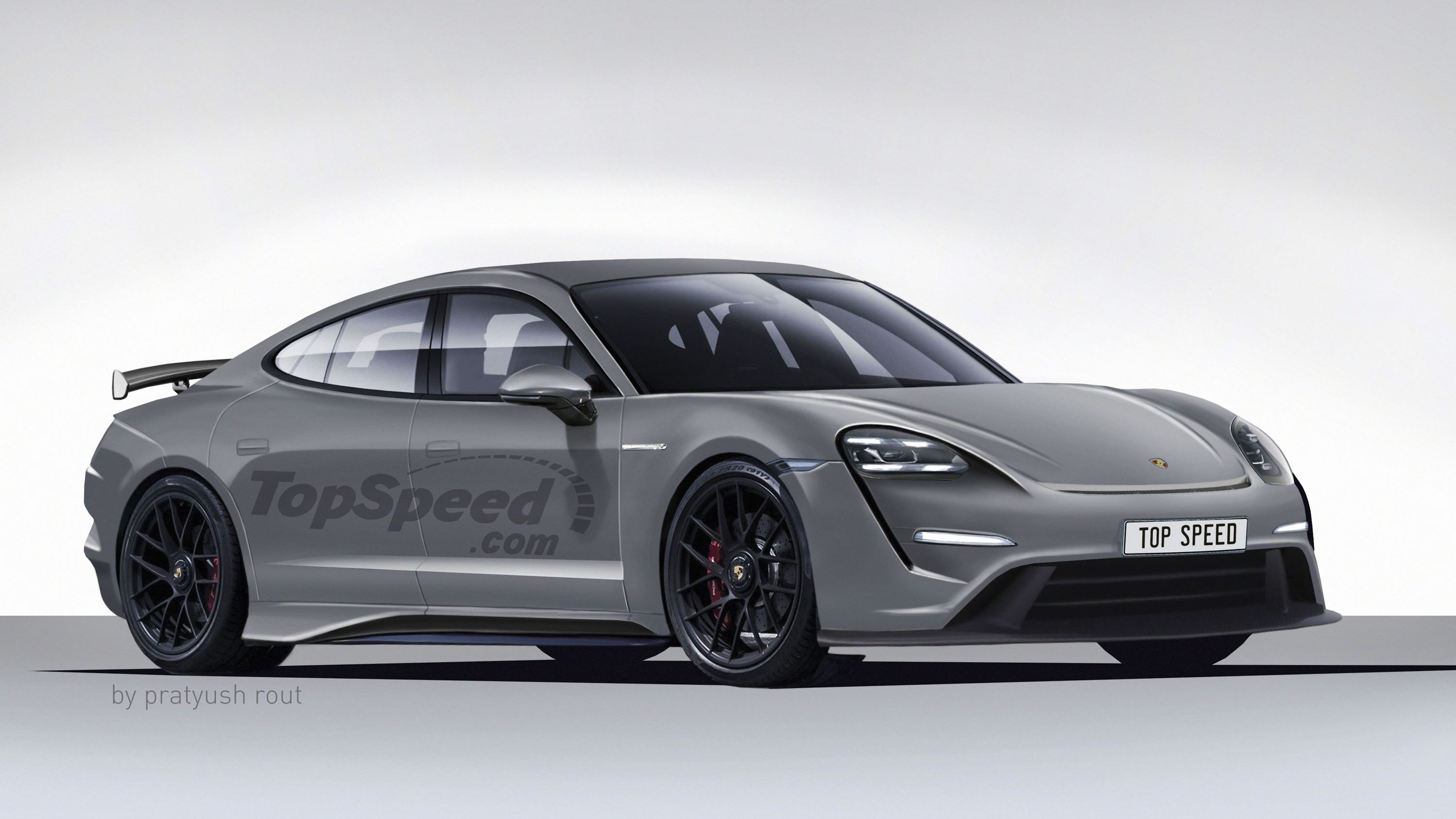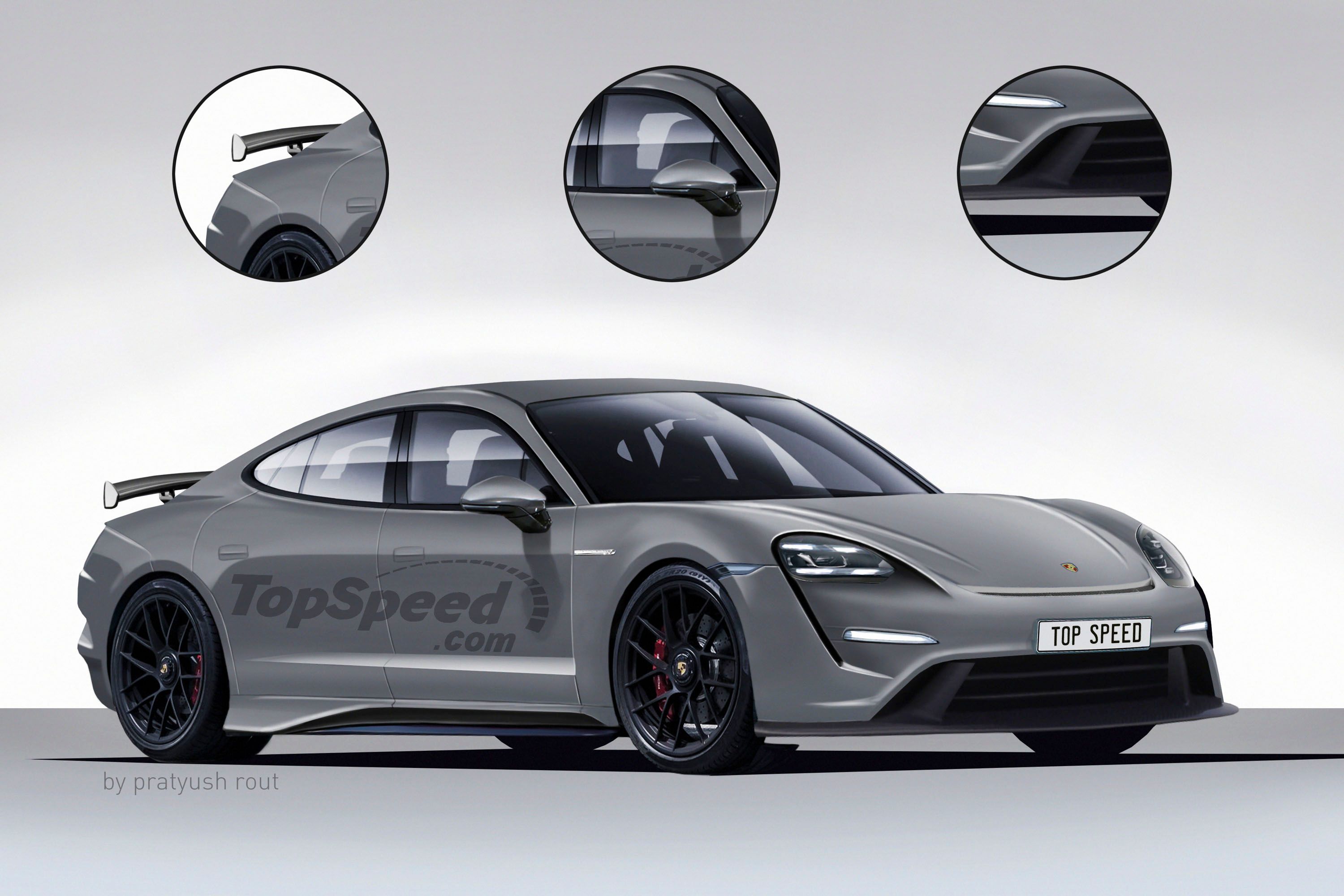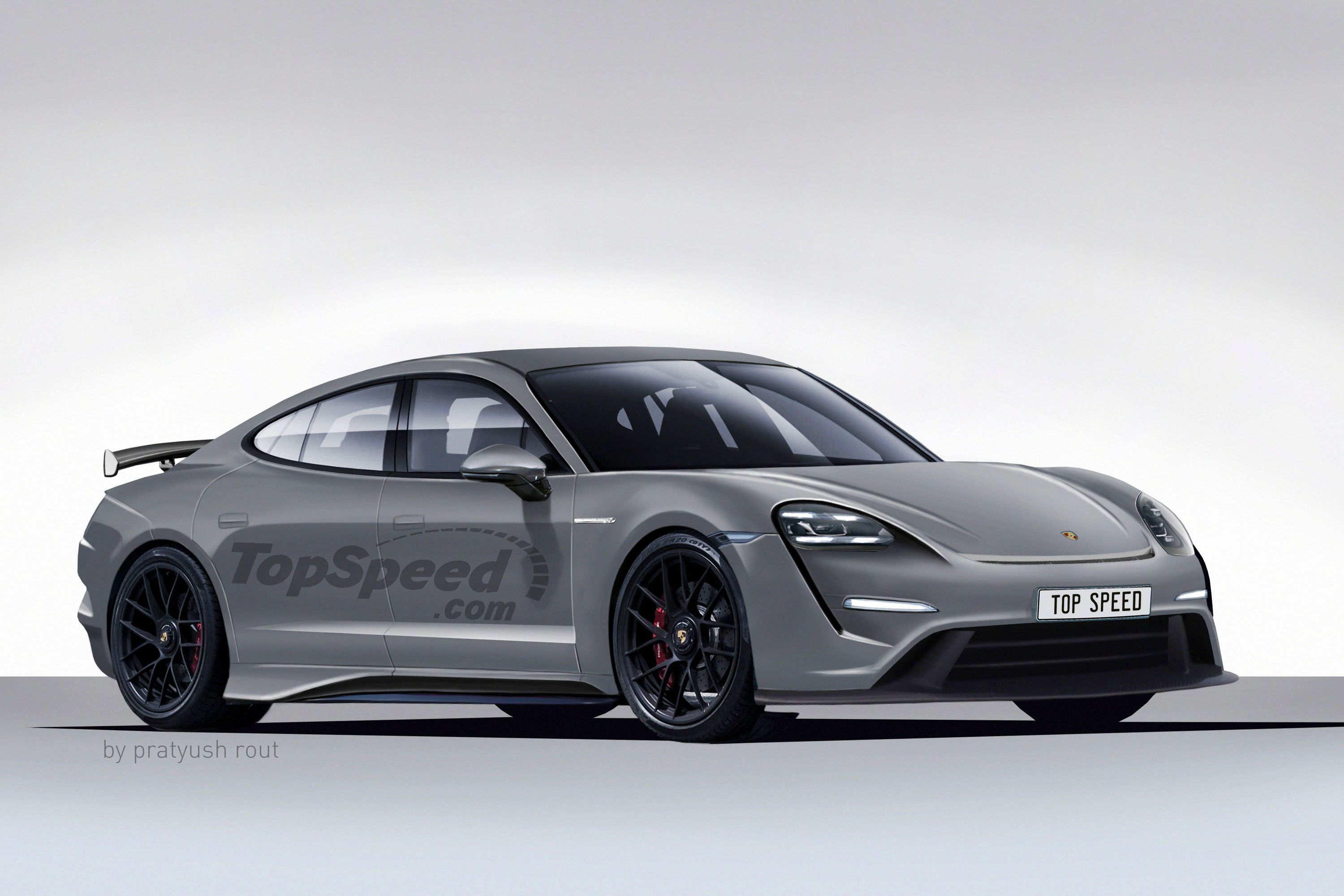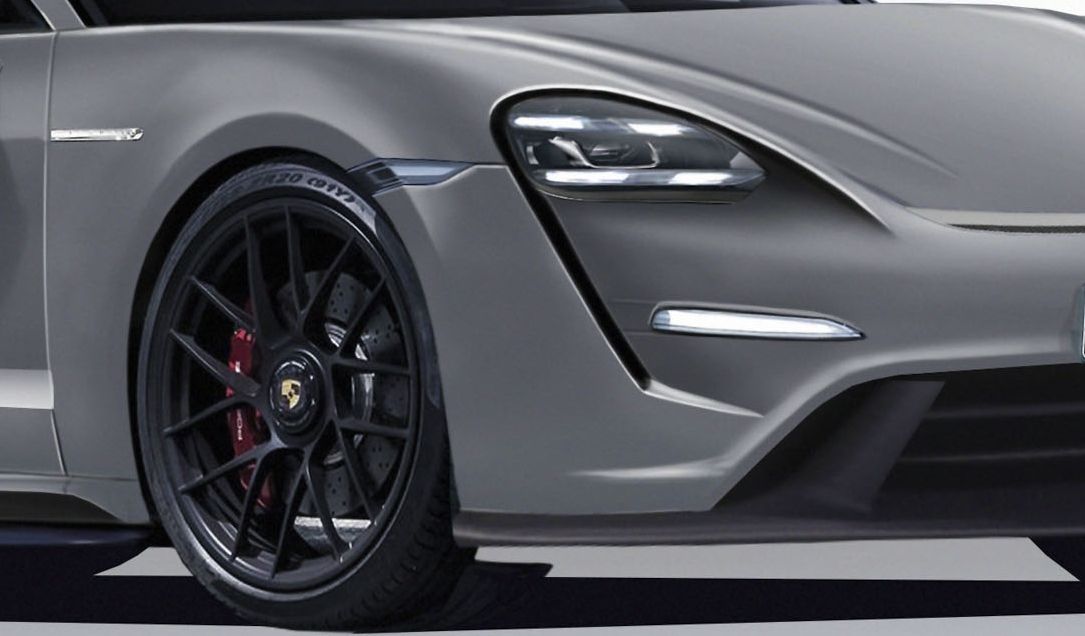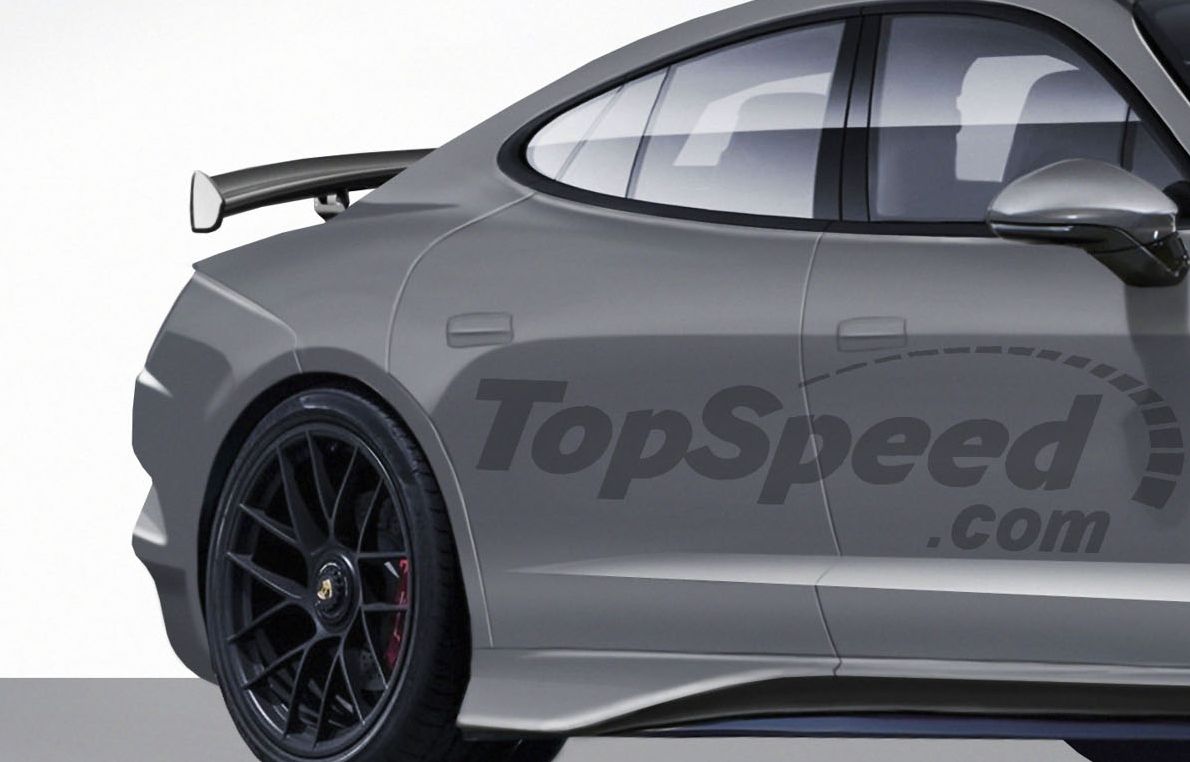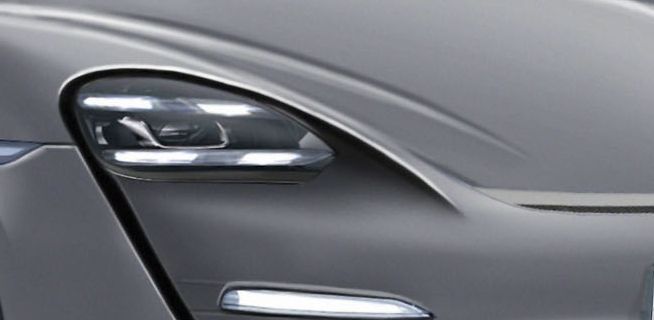In case you hadn’t heard, let me be the first to tell you – Porsche is building a four-door all-electric sports sedan, and it’s called the Mission E. Don’t worry, it’ll have all the go-fast characteristics you’d expect, just without the internal combustion to make it go. In fact, it should draw a good deal of its tech from the hybrid goodness developed for the Panamera and 918 Spyder, so that’s a plus. But, as we all know, Porsche isn’t satisfied to make just a single version of any one model. Multiple variants are required to fill every niche possible, so what about an even-faster Mission E? We’re calling it the Mission E GTS, and we decided to draw up a rendering and put together a speculative review to boot. Upgrades over the standard Mission E should include more aggressive exterior styling, lots of black trim pieces, more performance gear inside, a bigger battery, extra horsepower, and standard performance suspension.
The EV performance market is looking to balloon pretty rapidly over the next few years, and you can bet your lithium-ion battery pack Porsche will be there to take advantage of that growth. Read on for the details.
Continue reading to learn more about the 2021 Porsche Mission E GTS.
2021 Porsche Taycan GTS
- Make: Array
- Model: 2021 Porsche Taycan GTS
- Horsepower: 650
- [do not use] Vehicle Model: Array
Exterior
From the off, the Porsche Mission E GTS will be a somewhat unique entry in the Porsche model lineup. Of course, the traditional Stuttgart styling will be included, looking like an amalgamation of the 911, the 918 Spyder, and the Panamera. The nose will be rounded, curving downwards toward the pavement, with a wide and low stance to give it a definitively sporty flavoring. The hips will be broad, while the roofline will fall towards the truncated rear end at a gradual angle.
However, as is tradition for Porsche’s hotter GTS line, the Mission E GTS will get a few noticeable aesthetic changes to help it stand out from its standard, non-GTS siblings. Extra aggression will be the primary focus, with features like bigger wings, more prominent intakes, larger swoops, and similar details.
The front end will get the Mission E’s unique headlight design, which places the housings high on the fenders with a small teardrop shape framed by a prominent check mark crease. Lower horizontal daytime running lights emphasize the car’s width. LEDs will be the lighting element of choice.
Moving to the flanks, we find large wheels with a black finish, complementing the various blacked-out trim pieces, grilles, and mesh inserts that are so common on Porsche’s GTS models. The side sills get curvy ground effects that bring the car closer to the ground, a characterstic enhanced by the lowered ride height. The fenders will be broad to encapsulate the larger wheels.
In back, we’d expect to see a bigger diffuser element, once again in black, while above will be a larger wing for extra downforce. We’d also expect the wing to be adaptive, rising and falling to provide either more stick or less drag as the situation dictates.
Interior
Note: Porsche Panamera GTS pictured here.
While we have yet to actually see the interior of the Porsche Mission E, there’s still a few predictions we could make about a possible GTS version at this early point. First off, we’re gonna go with the Panamera GTS as a reference, and we would expect a similar layout and similar upgrades applied to the Mission E GTS.
For starters, the dash will likely incorporate a broad, horizontal design, with lots of wide lines that add a sense of space. The seating arrangement will include space for up to five passengers, with two up front and three in the rear, plus a little space in the trunk to haul around a suitcase or two. The steering wheel will draw inspiration from the 918 Spyder in terms of design, while digital screens will be used for user inputs and data relays.
Upgrades for the GTS model will include even sportier seats, with larger side bolsters to keep passengers in place while cornering. Alcantara upholstery will be the material of choice, and should be added to the seatbacks, the side panels, the doors, and just about anything else Porsche can manage. Finally, brushed aluminum and carbon fiber trim will add that extra bit of gloss.
Drivetrain
Like the standard Porsche Mission E, the Mission E GTS will be all-electric, routing motivation to the ground by way of four individual permanent synchronous electric motors, essentially making it AWD. There will also be multiple drive modes, from eco energy saving to maximum attack sport.
The GTS could enhance this with a special sport mode that throws caution (and range anxiety) to the wind for even greater acceleration. Luckily, the Mission E GTS would also likely get a bigger battery pack, offering both greater range per charge and more horsepower as a result. Once again placed under the floor, the larger lithium-ion pack would provide upwards of 350 miles per charge, a substantial increase compared to the standard Mission E’s 300 or so miles per charge. And, if Porsche delivers on its promise, charge times should be pretty quick thanks to the brand’s forthcoming proprietary 800-volt charging system.
But here’s the important bit – we would expect more power from the GTS, up to roughly 650 ponies compared to the standard model’s 600 horsepower. That would make it quicker, and when placed in its sportiest mode, the 0-to-60 mph time should drop to around 3 seconds flat compared to the standard model’s 3.5-second sprint.
Chassis And Handling
Under those freshened body panels, the Mission E GTS will utilize a unique chassis made specifically for all-electric applications. The platform should provide just the right stuff to make the car enjoyable in the corners, while also taking advantage of the all-electric’s benefits and minimizing its drawbacks.
Unique to the GTS model will be additional sporting elements for the suspension, including standard active components for greater performance in the corners. We’d also expect to see a more advanced torque vectoring system, not to mention four-wheel steering as well.
Extra exotic materials, such as additional carbon fiber and titanium, should also be used, cutting out a few pounds here and there. Nothing major – just enough to maximize the newfound power gains and aggressive suspension.
All told, the GTS will be measured in terms of how it performs on the track. The Nurburgring is the place where these things get the full shakedown – perhaps a time of 7 minutes, 45 seconds could justify the extra outlay.
Prices
With the Mission E expected to start at $85,000, a GTS version would likely put the bottom line at well over $100,000. However, if Porsche offers a stopgap between the base model Mission E and GTS model, such as an S iteration at $100,000, a price tag of $120,000 for the GTS would make a lot of sense.
Competition
Tesla Model S P100D
If you want a fast four-door EV, Tesla is pretty much the standard these days. Sitting at the top of the heap is the P100D, an AWD crusher of 0-to-60 mph times that manages to complete the benchmark in just 2.3 seconds. That’s seriously quick, and would likely trounce the Mission E GTS. But here’s the thing – Porsche is more concerned with handling than Tesla, and given a proper race track, the Tesla would likely fall short. Same goes for the interior appointment, where Stuttgart once again has the upper hand. However, if balls-out acceleration is all you care about, Tesla is the way to go.
Read our full review on the 2017 Tesla Model S P100D.
Conclusion
Note: Porsche Mission E test mule pictured here.
While at first glance it might seem absurd to render up a hot-to-trot iteration of a car Porsche hasn’t even released yet, there’s a method to our madness. In case you hadn’t noticed, Porsche absolutely loves offering a wide spectrum of performance versions for their most popular vehicles. Indeed, no stone is left unturned in the quest to satisfy speed enthusiasts, and there’s no reason the same formula won’t be applied to the Mission E.
In fact, it’s practically required when looking at the current EV market. Tesla is obviously one of the biggest names here, and with a variety of model variants on offer for more speed, more range, and more bragging rights, Porsche can’t ignore the obvious.
References
Porsche Mission E
Read our full review on the 2020 Porsche Mission E.
Porsche Panamera
Read our full review on the 2018 Porsche Panamera.
Porsche 918 Spyder
Read our full review on the 2014 Porsche 918 Spyder.

